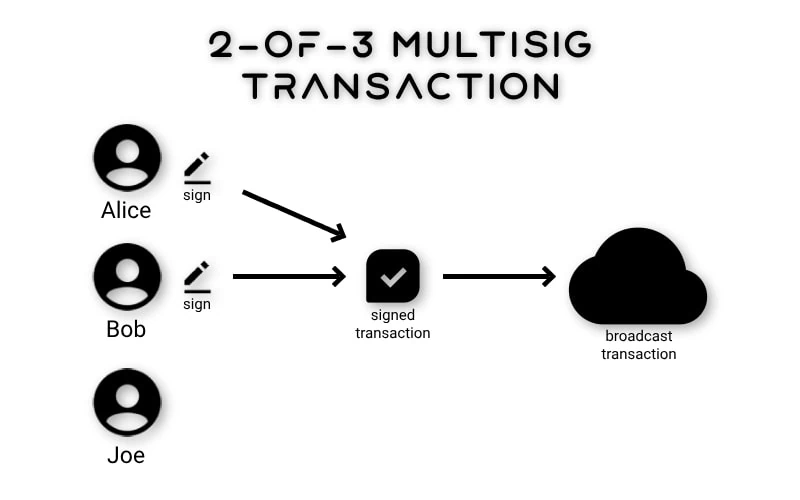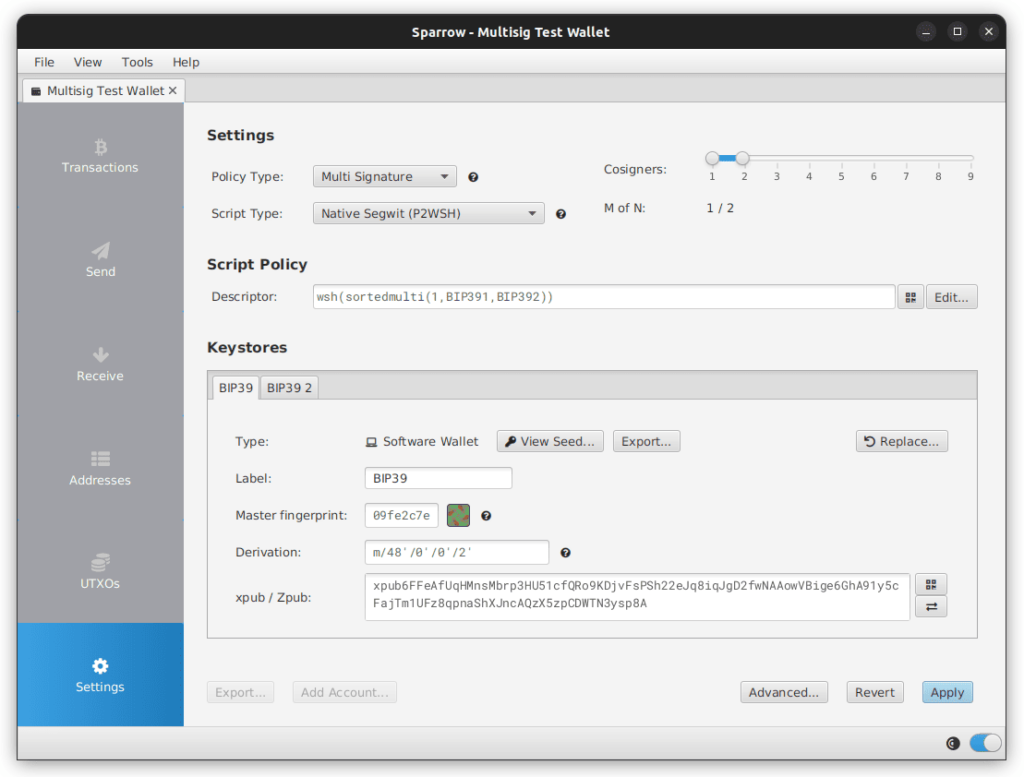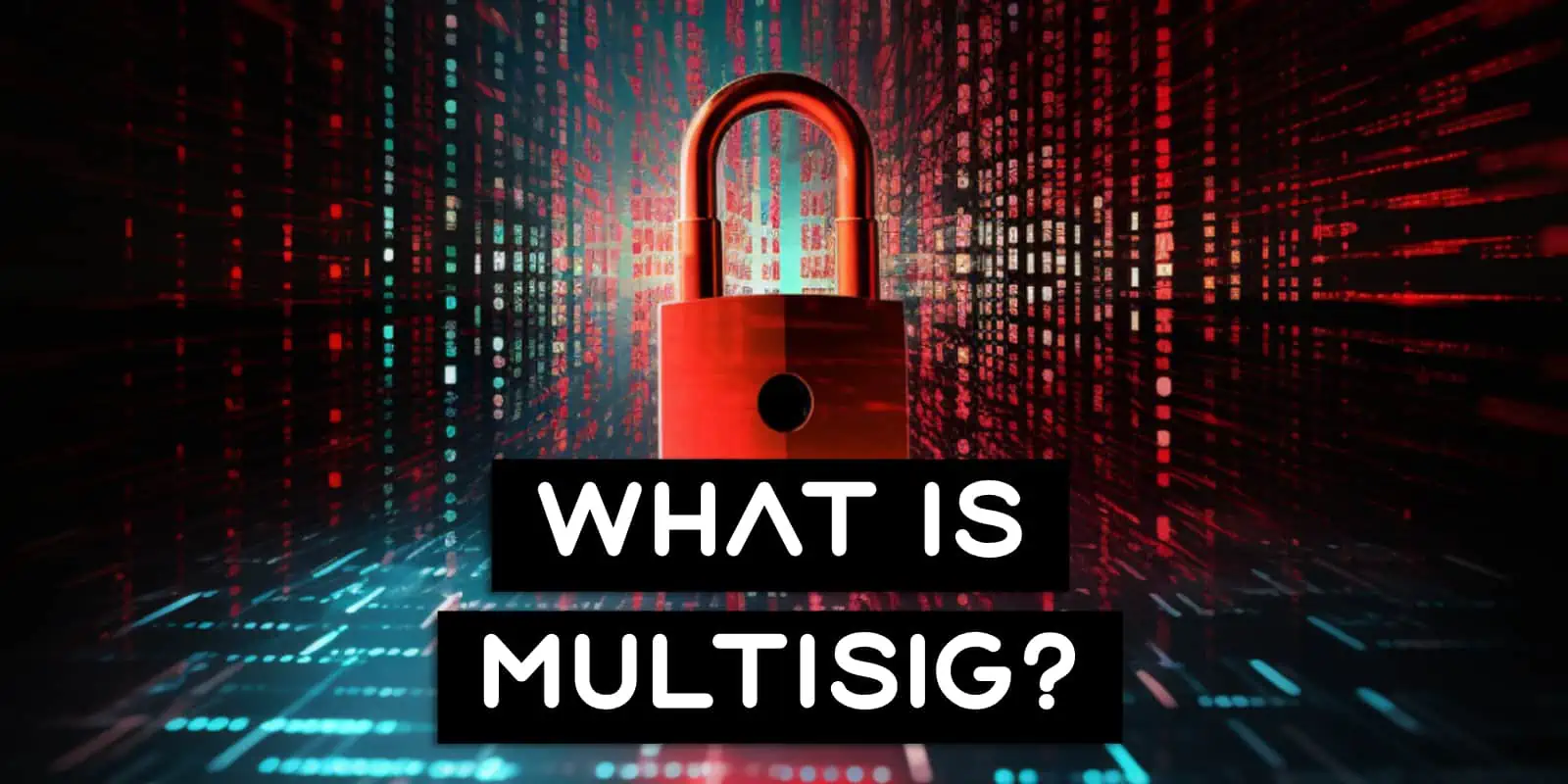Are you tired of sleepless nights, worrying about the safety of your hard-earned bitcoin? Maybe you’ve heard of Multisig Wallets, but aren’t confident enough to use them.
Well today we’re going to dig deep into what they are and how to create an impenetrable fortress for your digital assets once and for all.
Contents
What Is A Multisig Wallet?
A multisig wallet is a cryptocurrency wallet that operates using more than one key. While single sig wallets use only one private key, multisignature wallets can incorporate up to 15 different private keys that are all used to secure your funds.
Why Use A Multisig Wallet?
Multisig wallets allow for a whole host of additional features that are useful for both regular users as well as full blown multi-national companies such as:
- Increased Security: As there are multiple keys protecting your funds, this dramatically increases the security of the crypto wallet in a number of way we cover below
- Protection Against Lost Keys: Users often lose access to their private keys. They forget the PIN to their hardware wallet, forgot where they stored it or can lose it due to a natural disaster. Multisig wallets protect against Lost Bitcoin as users are still able to recover funds even if they lose one private key
- Collaborative Custody: Businesses that wish to hold bitcoin can not only increase their security, but also enable unique use cases like requiring multiple company board partners to agree before company funds are spent
- Inheritance Planning: Using a multisig wallet enables users to create simple or complex inheritance setups that let them retain control over their funds, whilst still allowing for recovery of them when they pass away
How Does A Multisig Wallet Work?
While most wallets only use a single signature or private key, a multisig wallet is quite different. At the heart of its design is the number of private keys that make up the quorum and then the number of cosigns required to spend the funds.
This is represented in shorthand as M-of-N, where N represents the total number of private keys or cosigners in the quorum and M represents the signing threshold required to spend the funds. So for example a 2-of-3 multisig wallet has three total private keys, but only requires any two keys to spend the funds.

Above you can see how a typical spend happens with a single key wallet. The user takes the one key they have, signs the transaction and broadcasts it the Bitcoin network. When it comes to multi sig wallets, there’s an extra step involved.

- Create Transaction: First the transaction is created by your wallet software. This special transaction contains the amount to be spent and the receiving address, but is not yet signed
- Cosign: Next the transaction is signed by various private key holders until the cosigner threshold is met. For example, a 2-of-3 multisig wallet would need 2 key holders to sign a transaction
- Broadcast: Once fully signed, the transaction is broadcast to the Bitcoin Network
Types Of Multi Signature Wallets
There are many different ways you can setup a multisig wallet with each of them enabling different security models and different features. Here are a few different examples and how they are commonly used:
- 1-of-2: Used to give equal spend rights to multiple users. This is akin to a couple sharing a joint account that they use for everyday expenses. It also means that if one of them loses access to their key, the funds aren’t lost
- 2-of-2: These types of multisig wallets are commonly used by Peer To Peer Crypto Exchanges as an escrow account. The funds being traded are moved to the 2-of-2 multisig wallet and can then only be moved if both parties are happy that the trade has been completed
- 2-of-3: One of the most common multisignature wallets, this is often used as a geographically distributed cold storage wallet to protect serious funds. The wallet requires any 2 of the 3 keys to spend the funds and each private key is often stored at a different location to protect against theft or natural disaster
- 3-of-5: This design allows for more redundancy in the loss of keys. It can also be common when users want to involve family or friends for inheritance reasons
- 7-of-9: A favorite for any Star Trek fan, this or a similar high number of keys could be used for collaborative custody of company funds. A company board might have 9 members and require a super majority of 7 or more to authorize transactions or transfer funds
Advantages Of Multisig Wallets
Single Point Of Failure Protection: One of the most important benefits of a multisig wallet is that it eliminates the single point of failure that comes with only having one private key
Flawed Seed Generation Protection: Properly generating a secure private key is not trivial and many hardware and software wallets have had flaws. This can result in hackers stealing your crypto whether it’s in a hot wallet or dedicated hardware device. Using different devices or different methods to generate your multisig wallet private keys protects you against this potential catastrophic failure
Third Party Protection: Hardware wallet providers have the ability to compromise your private key in a number of different ways. From bugs in their code to being coerced by a government, multisig wallets add an additional layer of security to protect you even if they intentionally push you firmware that can extract your private keys
Seed Phrase Protection: With single key wallets you have to protect that private key with everything you’ve got. If someone gets it, they gain access to all your crypto assets. If the seed phrase backup is stored off site, you may not even know it’s been compromised until all your funds are gone. Multisig wallets protects you as if thieves steals a private key, the funds are still safe
Physical Duress Protection: it’s trivial for a robber to get access to a single signature wallet using physical duress. However as a multisig wallet requires multiple keys, it significantly increases the complexity of a successful attack. Robbers now have to know where the other private keys are stored, how many are needed, get access to those other locations, possibly drive for hundreds of kilometers all while not attracting attention
Disadvantages Of Multisig Wallets
Increased Technical Knowledge: A multisig cryptocurrency wallet requires more technical knowledge to setup, use and backup than one with a single key. This is usually the number one reason why users don’t use a multi signature wallet, but with new tools and applications it’s getting easier every day
Decreased Transaction Speed: As you normally need at least two private keys to cosign a transaction before being able to spend from a multisignature wallet, this can take additional time. For example you may have to physically drive hundreds of kilometers to get the associated private keys. While this is much safer and intentional, it does still take more time than spending with single signature hot wallets
Increased Backup Complexity: With multisig crypto wallets you not only need to backup each and every recovery phrase, but also the public key for each signature as well. Even if you lose one of the private keys, you will still need its public key to fully restore the multisig wallet. This means you need multiple copies of each public key
Increased Transaction Costs: As multisig transactions require more data in them, this means that they take up more space on the Bitcoin Blockchain and thus, cost more in transaction fees
How To Create A Multisig Wallet

You can create multisig wallets with any combination of wallet types. From a hot wallet to a mobile device to cold wallets, you just need multiple private keys and a software cryptocurrency wallet that supports the multi signature functionality.
The above image is a 1-of-2 multisig wallet with both of the private keys being generated by Sparrow Wallet (hot wallets). This is obviously not a very secure example, but it proves that you don’t need to spend hundreds of dollars on multiple different crypto hardware wallets to play around with multisig wallets.
In Sparrow you simple go to File -> New Wallet, then under the Policy Type setting select Multi Signature. From here you chose the Signing Threshold (M) and number of Cosigners (N) required. You then setup each of the N cosigners and click Apply once done.
We have a full, step-by-step guide on How To Create A Multisig Wallet that covers each and every step from creation to sending and receiving as well as proper back up and restore. Our proposed multisig setup is also exceptionally cheap (<$60 USD total) and is incredibly simply to setup, use, maintain and backup.
Backing Up The Private Keys
Multisig wallets obviously have multiple private keys, which means you have to back them all up. It’s recommended these are in different physical locations, preferably separated by long distances and with their own security such as locks, gates, cameras and guards if possible.
>> Learn More: A Guide To Expert Bitcoin Security
As mentioned earlier, it’s also vital with multisig wallets to backup all the public keys or xPubs of each private key that’s used in it. This is because when you make a Bitcoin transaction, you not only have to sign it with your private keys, you also need to provide the script that’s used to lock the coins in the first place.
The script for a multisig wallet is made up of all the public keys for all cosigners. As such, in order to spend the funds you need to always know all the public keys in the multi signature wallet, not just the ones in the minimum signing threshold.
As such, when backing up your multisig wallets private keys, make sure you always have a copy of every public key with each individual private key. To help simplify this, there’s a standard for storing and recovering all the combined information which is called Output Descriptors.
Multisig Wallets: The Gold Standard For Bitcoin Storage
Multisig wallets are the most advanced form of crypto wallet and provide both users and companies with a wealth of highly useful security benefits. If you’re an investor or someone that has serious funds stored in digital assets like bitcoin, we heavily recommend taking the time and effort to learn about them.
FAQ
Which Wallets Support Multisig?
Sparrow Wallet is an example of an excellent and secure multisig wallet. Other easy to use and secure cryptocurrency wallets that support multisig include Nunchuk or Specter Wallet.
What Is An Example Of A Multisig Address?
Multisig addresses are a bit longer than a single signature Bitcoin Address:
bc1qlnm8wy23mqwkgt0u5z362ttzgg56j0kyzfzlslh2ec8dmrynphfs3yy9q5
Can You Tell If A Wallet Is Multisig?
Yes. There will be multiple cosigners required to generate new receive addresses or spend the funds.
What’s The Best Multisig Wallet?
After extensive testing, we recommend Sparrow Wallet as it not only supports multisig wallets, but a vast array of hot and cold crypto wallets, has excellent security and allows you to connect it over Tor to your own Full Bitcoin Node.
What Is The best Multi-Signature Cold Wallet?
All of the top hardware Crypto Wallets that we’ve reviewed and rated support multisig wallets. Some of the best ones include the BitBox02, Foundation Passport, Blockstream Jade and COLDCARD Mk4.



